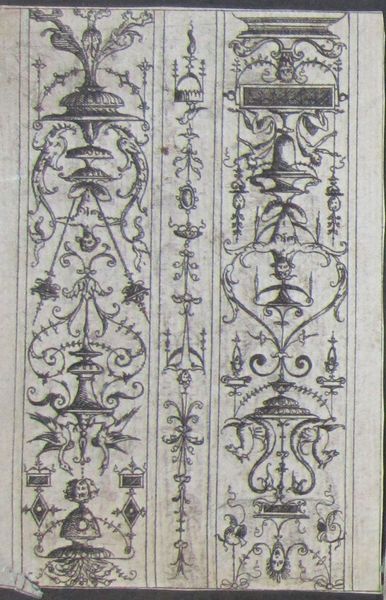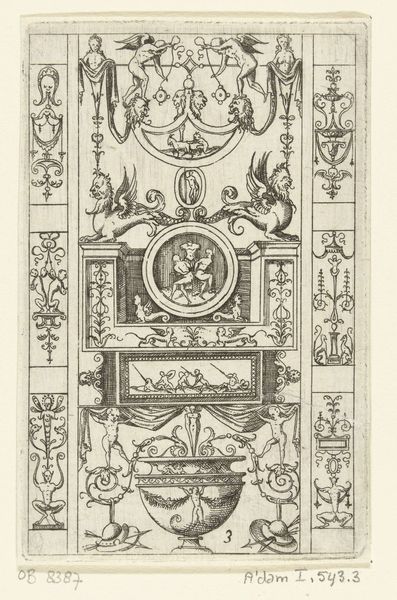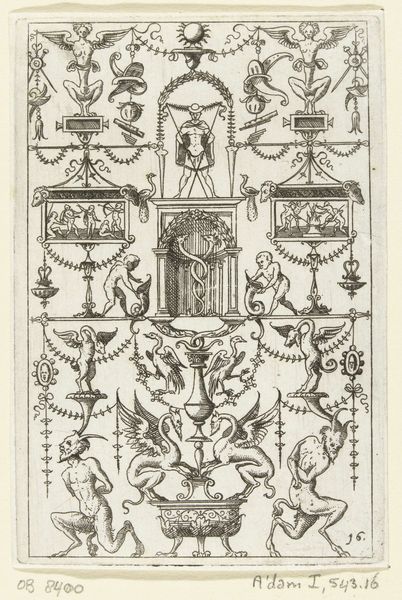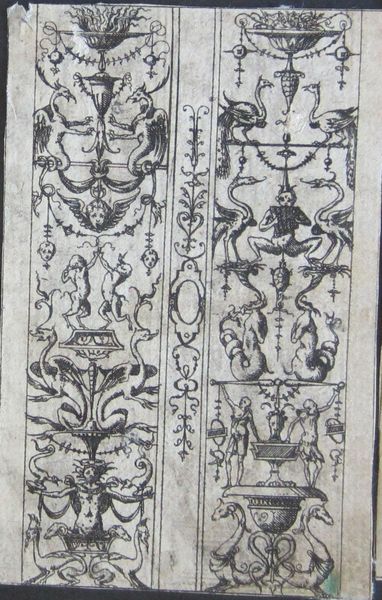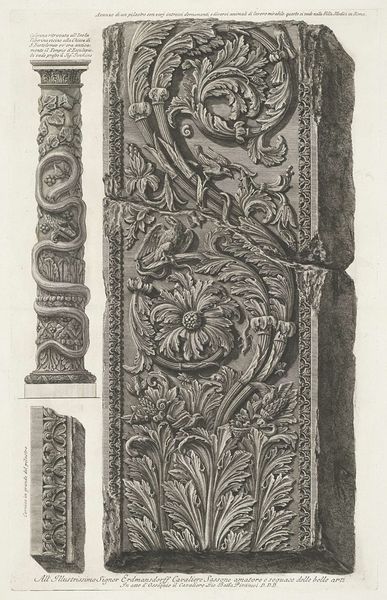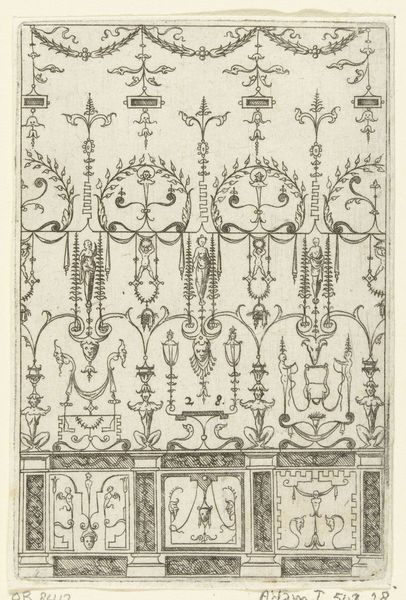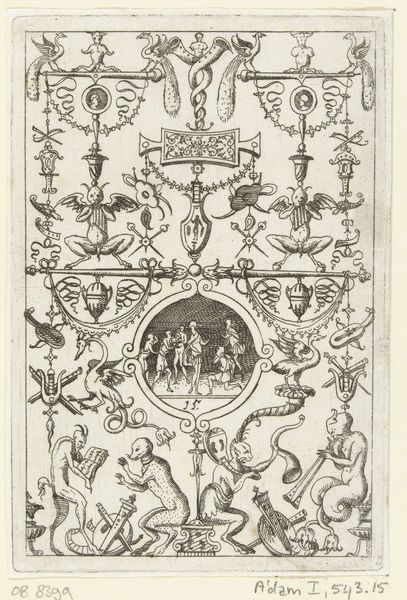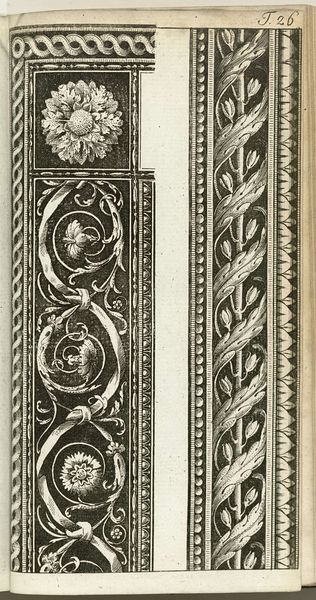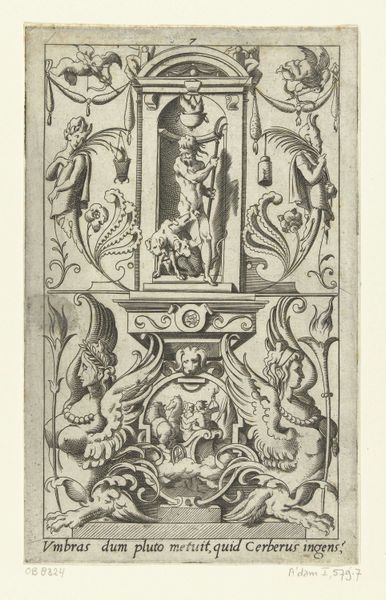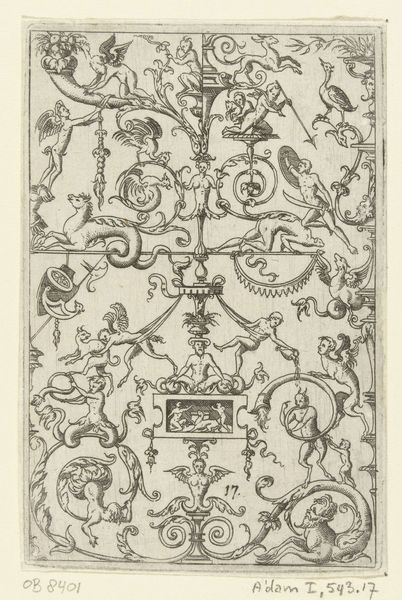
drawing, print, ink, engraving
#
drawing
#
pen drawing
# print
#
ink line art
#
11_renaissance
#
ink
#
engraving
Dimensions: height 105 mm, width 70 mm
Copyright: Rijks Museum: Open Domain
Editor: So, here we have "Twee kandelabers, elk tussen twee gearceerde banden," or "Two Candelabras, each between two shaded bands," by Hans Sibmacher, dating roughly from 1525 to 1594. It's an ink engraving. What strikes me is how strange yet elegant it is, these almost nightmarish creatures interspersed with delicate floral patterns. How do you interpret the imagery used here? Curator: The power of these images rests in their symbolic charge, a visual language spoken across generations. The candelabras themselves are less about illumination and more about ritual, wouldn't you agree? Consider the recurring motif of paired creatures – swans, hybrid beasts, even the symmetrical arrangement of human figures. Editor: Absolutely, that symmetry seems crucial. What's the significance of pairing them? Curator: In Renaissance thought, symmetry embodies order, harmony, divine balance. But these aren't purely decorative flourishes. They echo alchemical ideas, the union of opposites to create something new. The monstrous figures could represent aspects of human nature needing taming. What emotions do they evoke in you? Editor: A kind of unease, a reminder of the shadow self. But also a curiosity. They feel like fragments of half-forgotten myths. Curator: Precisely! Sibmacher isn't just decorating; he's tapping into deep-seated archetypes, symbols that resonate within our collective unconscious, informing not only what we see but how we feel. It’s a visual echo chamber of cultural memory. Editor: That's a fascinating way to look at it. I’ll definitely look at Renaissance art differently from now on! Curator: Indeed, symbols speak to us across centuries. The power lies in learning to listen.
Comments
No comments
Be the first to comment and join the conversation on the ultimate creative platform.
